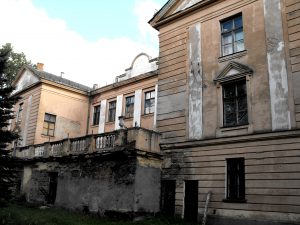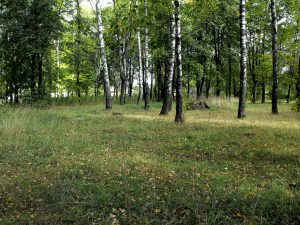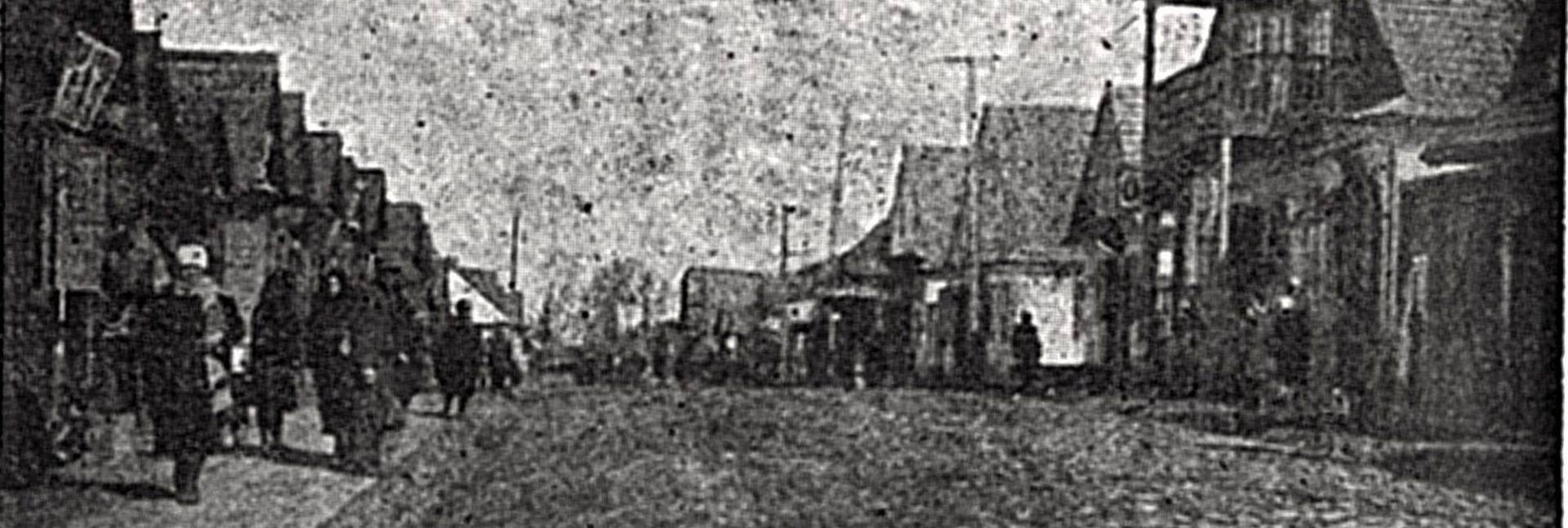Rabbis
Rabbi Efraim Mordechai HaLevi Epstein, grandson of Rabbi Aryeh Leib HaLevi Epstein, was appointed rabbi of Kossovo in 1768/69. After the death of Rabbi Ephraim Mordechai, his son-in-law Rabbi Yehuda Meir was appointed to replace him in 1807/1808.
In 1858 Rabbi Shaul Katzenelbogen was appointed rabbi of the town. Rabbi Katzenelbogen left the town in 1882 when he became the rabbi of Kobrin, and was succeeded by his son-in-law Rabbi Shmaryahu Yosef Karelitz. (He was the father of Avrohom Yeshaya Karelitz, who is also known by the name of his great work, Chazon Ish.) At the same time Rabbi Menachem Mendel Szereszewski, the son-in-law of Rabbi Shmuel Slonimsky, who was a rabbi in the town, was appointed Rabbi of the town. Rabbi Szereszewski served as Rabbi for 43 years until his immigration to Israel in 1927. After Rabbi Szereszewski immigrated to Jerusalem in 1927 he was succeeded by his son-in-law, Rabbi Meir Lejkin. (Rabbi Szereszewski’s grandson Zalman Wolański served as the secretary of the Slabodka Yeshiva in Hebron and was murdered during the 1929 Hebron Massacre.)
Rabbi Josef Kosower, the son of Rabbi Kalman Berkowicz was born in Kossovo in 5655 (1894/1895). He served as the head of the Estrog Yeshiva in VIlnius and wrote the book “Chelkas Yosef” (in English, “Joseph’s Plot”). He was murdered on Tisha B’Av 5701 (1941) in Vilnius.
Click on any of the following photos to see an enlarged version with captions.
Synagogues and Cemeteries
There were four synagogues in Kossovo. No sign of their presence remains today.

There was a Jewish cemetery identified on the 1932 government map (see the Maps page). It was about 75m/250ft x 150m/500ft; which means it had an area of about 11,250 sq meters (just under 3 acres). According to to the sztetl.org.pl website the cemetery was established in 1650. In 1958 a school was erected at the location of the cemetery and the school yard was placed around it. It can be seen on current maps and is the same size as the cemetery. There is no evidence today of a cemetery at that location. In 2012 a photographer, Avner, took photos of the cemeteries in Kosów Poleski and put these photos into the public domain. We are grateful for his contribution.

Two of his photos show the school that was constructed over the cemetery, as well as the yard around the school. His caption explains that this was “the site of one of the former Jewish cemeteries in Kossovo, at the end of [what is now] February 3rd Street. On the site of this cemetery, a school and school park was built in 1958, covering the entire former cemetery.”
At two other locations gravestones can be found. Avner’s photos, below, are accompanied by this explanation (translated from Russian): “The old Jewish cemetery of Kossovo. It is located in the tract of Yalovasto near the city, on the way to Niachačava. In the cemetery are many large tombstones from the beginning of the 20th century with geometric designs, plant ornaments, the star of David and a heart surrounding a star of David. One of them has a menorah design. The graves have been ransacked by vandals, the tombstones are toppled and lie on the ground.” Yalovasto is also the site of a modern memorial stone commemorating the murder of 200 Jews. (See the last photo in the gallery of images below.) Niachačava is to the south of Kosava and they are connected by a road designated “H706.” Avner’s photos are below. Click on any image to see an enlarged version.
More photos of this same cemetery can be seen on the sztetl.org.pl site, including some that are not duplicates of Avner’s photos. One shows a headstone that had been recut for use as a grinding wheel (for grain). The graves in the photos appear to have been cleaned at the time they were photographed and are therefore easily read. The site indicates the cemetery was established in 1880. It is not marked on the 1932 map of Kosów Poleski.
